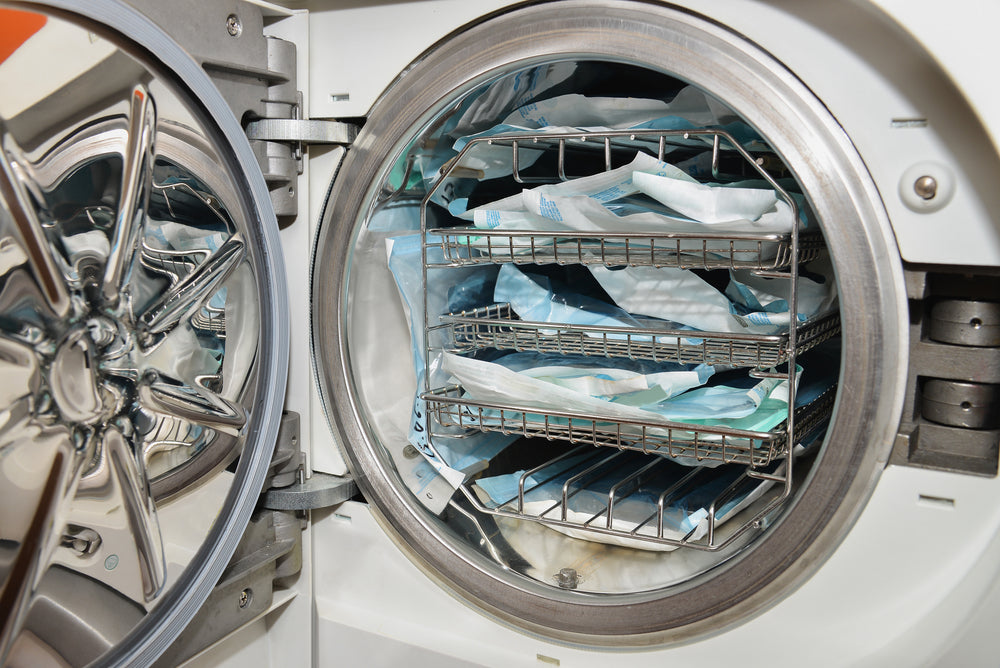
Are you looking to purchase an autoclave? Do you understand exactly what they are and what the various components are? Let's take a look now in more detail.
Autoclaves are recognised for their highly advanced techniques of sterilisation. It is because of this that you can find autoclaves being used in various industries, from medical fields to industrial fields.
In this article, we’ll be talking about what an autoclave is along with its respective components and their functions.
What Is An Autoclave?
An autoclave is a pressure chamber device that is used to perform thorough sterilisation which removes all types of microbial life.
It does this by displacing air from within the chamber so that it will be converted to pressurised steam which is set to reach a certain sterilisation temperature and time.
With these high temperatures, microbial life will not be able to survive, and the instrument undergoing the sterilisation process will be completely sterilised.
These devices are often used to sterilise medical instruments and equipment, which is why they are used in many settings such as laboratories, dentistries, pharmacies, hospitals, and even nail salons!
What Are The Parts Of An Autoclave?
An autoclave has various components that all serve their own functions. Here are some of their main components below:
1). Chamber
The chamber of an autoclave is where the sterilisation process occurs. It is composed of an inner chamber and an outer jacket which is filled with steam to quicken sterilisation cycles and lessen condensation.
2). Controls System
The control systems of an autoclave are known to be more sophisticated and complex.
They can take form as a push-button system or a complicated touch screen system; however, nonetheless, they are especially critical because they control the sterilisation process themselves.
An autoclave has a control panel that is set to facilitate the sterilisation process according to a set and encoded “recipe.”
It does this by controlling the opening and closing of valves and various other components for the different phases of the sterilisation sequence.
To put it simply: a control system follows a recipe from the autoclave’s software in order to initiate the sterilisation process and its different phases.
3). Thermostatic Trap
This component controls condensation within the chamber by allowing and monitoring the air and water that exit the chamber.
This is a vital component because it permits the passage of dry steam by discharging condensate.
Essentially, thermostatic traps are designed to follow a specific “recipe” as introduced in the controls system.
This means that once the thermostatic reaches a certain temperature, they will automatically close on their own.
4). Safety Valve
As autoclaves operate at very high levels of pressure which can pose potential dangers for the user, the safety valve is another critical component of the autoclave.
The safety valve is a fail-safe device that acts as a backup plan should electronic controls or procedures for the pressure vessel fail.
Because of its large safety role, it is important that you ensure your safety valve is tested before usage and is regularly inspected and maintained.
5). Cooling System
The cooling system of an autoclave makes use of a waste-water cooling mechanism.
Before waste-water produced by the autoclave can enter the drain piping, the waste-water is cooled so that any heat will not damage the draining system.
6). Vacuum System
Vacuum systems are designed to replace air present inside the chamber with steam.
It does this in two phases: pre-vacuum, where it removes air by pulling a vacuum on the chamber before the cycle, and post-vacuum, where it pulls a vacuum after the cycle in order to remove remaining steam within the chamber.
Vacuum systems are not present in all autoclaves, as usually, only certain types of autoclaves have them.
7). Steam Generator
Steam generators are also known as a boiler and work by generating a source of steam especially for occasions when the autoclave does not have a central source of steam or when the original source of steam is insufficient.
Similar to the vacuum system, steam generators are only present in some types of autoclaves.
Final Thoughts
We can see from above that autoclaves are fairly simple instruments, with quite complex capabilities.
If you are searching for the best autoclave supplier in Australia, then look no further than Medical Equipment Services Australia.
We were originally established in 1952 in order to provide electro-medical products to healthcare professionals across the country.
The company (Medical Equipment Services) was acquired by Medical Equipment Australia in 2009. Since then, we have also expanded into the dental industry.
For all your medical and dental supply requirements, please call us today on 1300 342 013 or contact us through our website.


